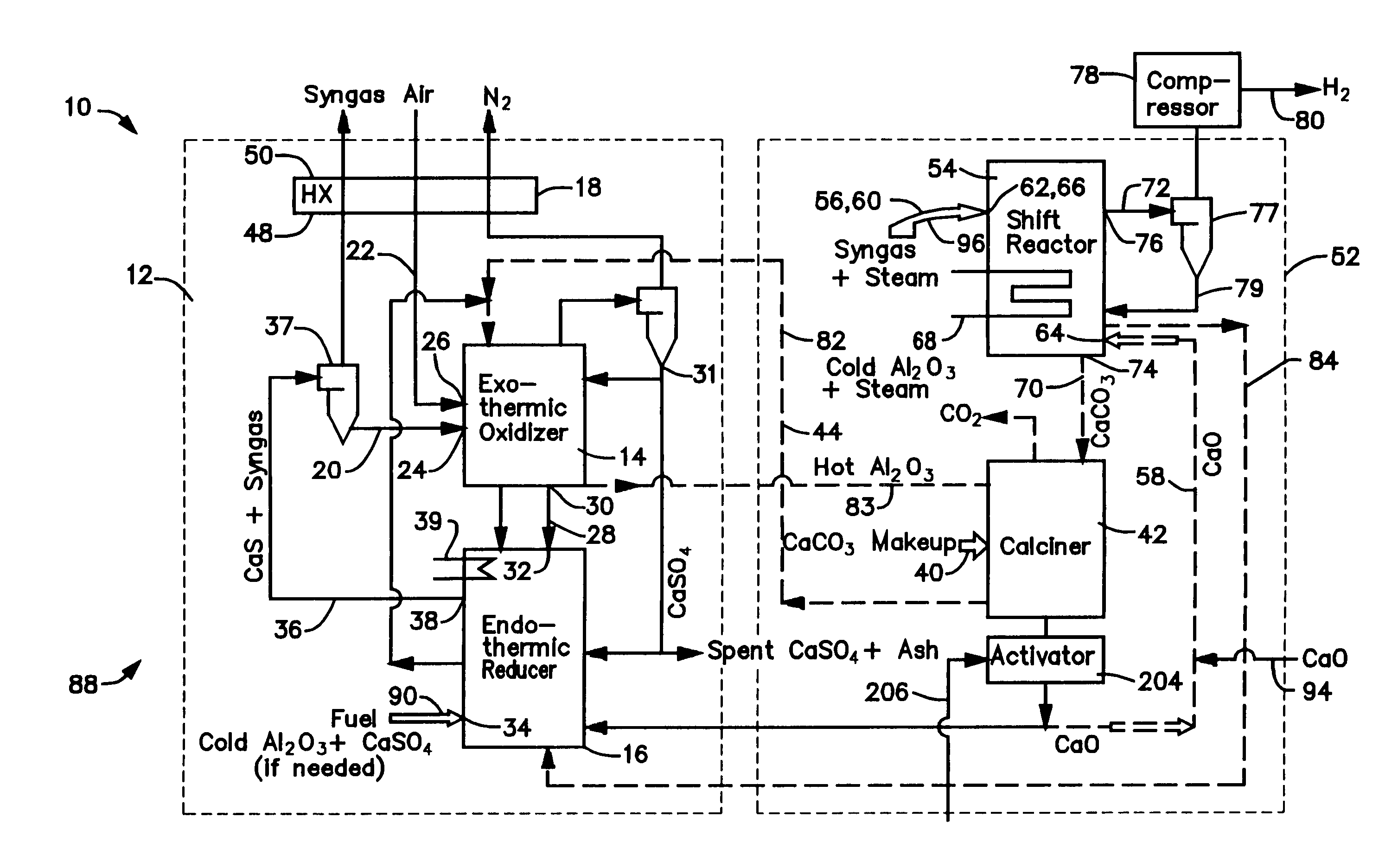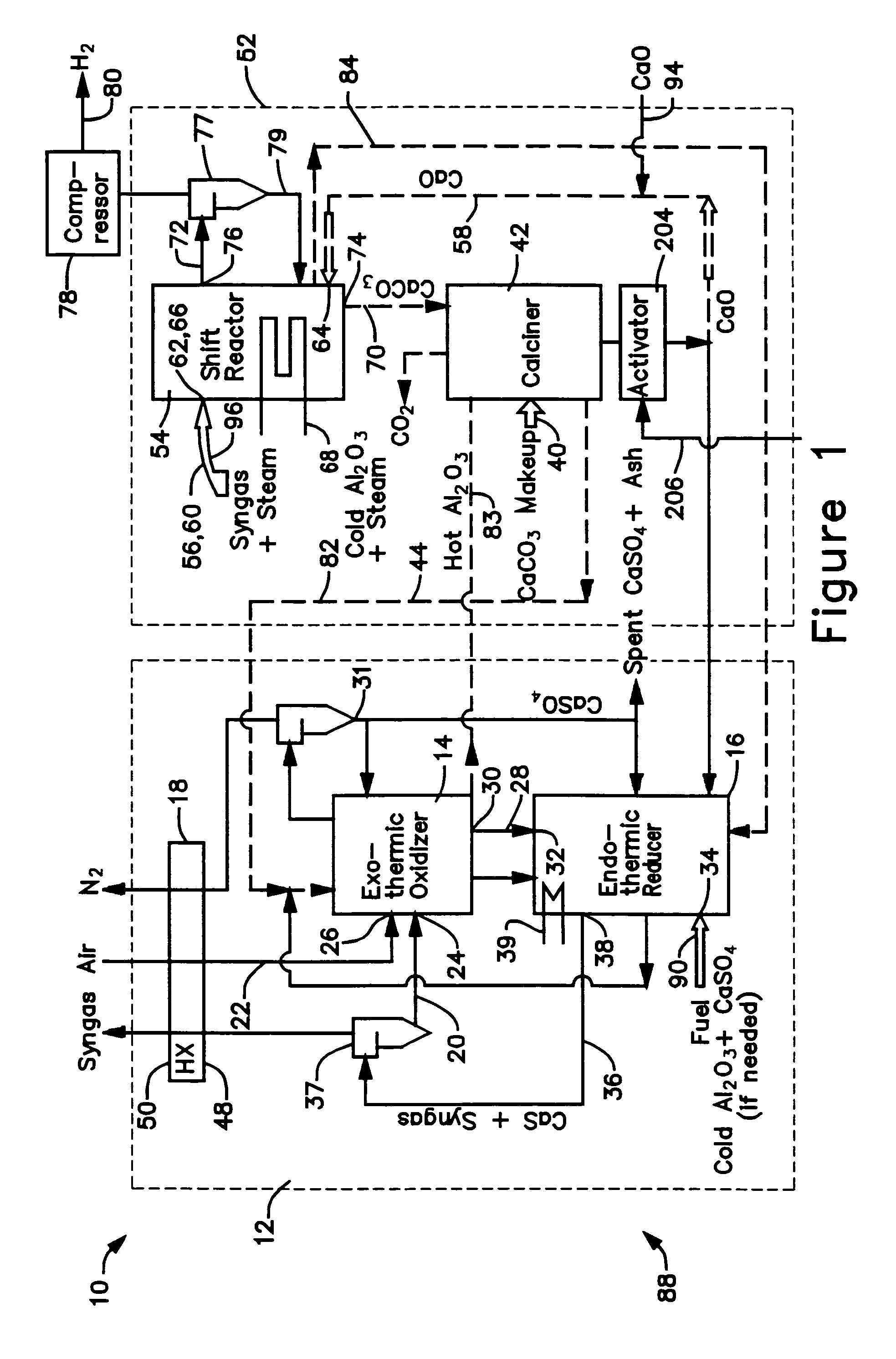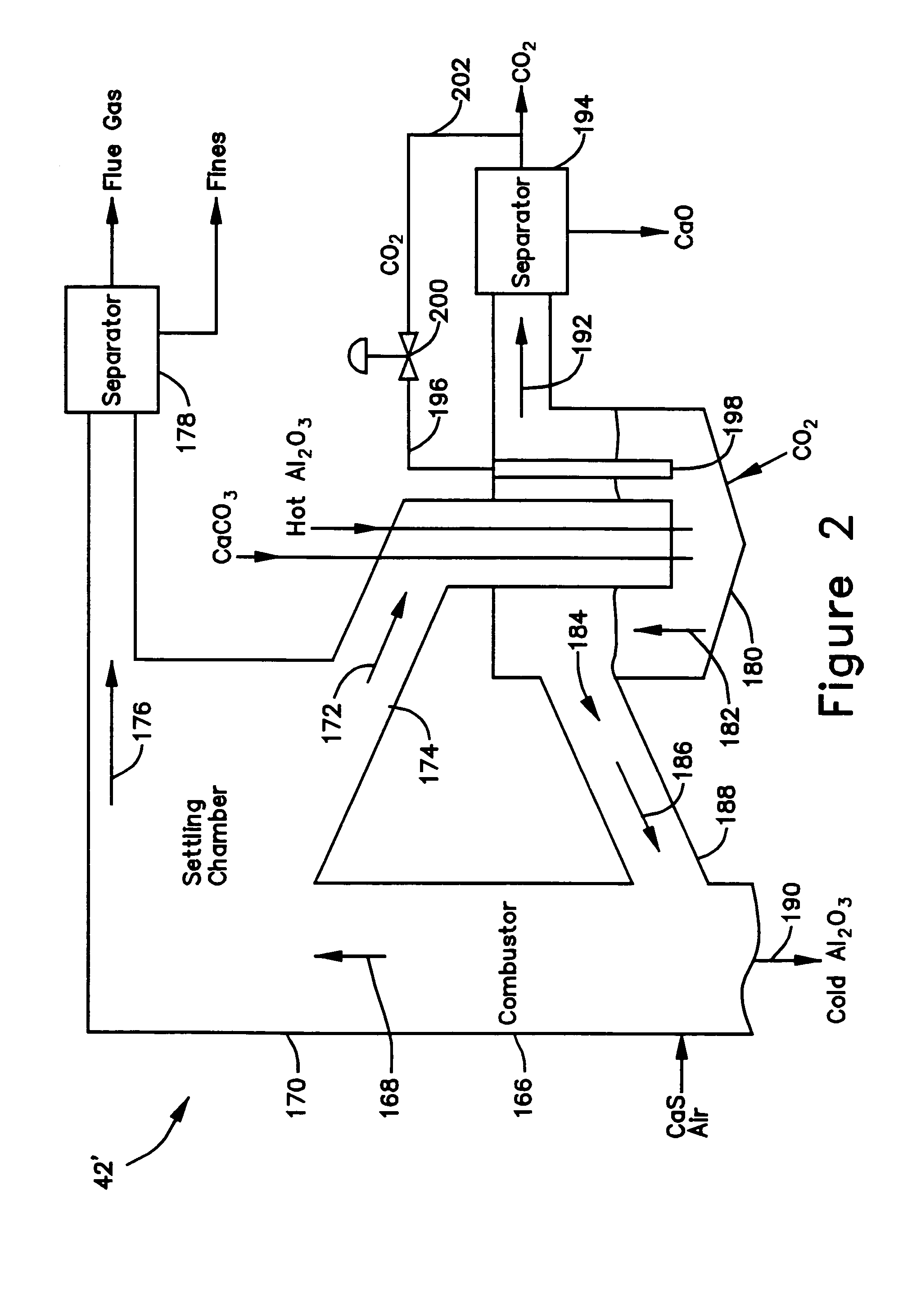Hot solids gasifier with CO2 removal and hydrogen production
a gasifier and hot solids technology, applied in the direction of hydrogen/synthetic gas production, gas modification by gas mixing, hydrogen/synthetic gas production, etc., can solve the problems of large capital equipment requirements, insufficient reductions, and insufficient reductions to achieve atmospheric cosub>2 /sub>stabilization
- Summary
- Abstract
- Description
- Claims
- Application Information
AI Technical Summary
Benefits of technology
Problems solved by technology
Method used
Image
Examples
first embodiment
[0030]The calciner 42 in the CaO / CaCO3 loop 52 is a high temperature endothermic reactor that receives its heat from the oxidizer reactor 14 in the CaS / CaSO4 loop 12. In a thermal process loop 82, 83 transferring heat from the oxidizer reactor 14 to the calciner 42 (FIG. 1), a heat exchange mass in the form of inert particles, such as bauxite (Al2O3) particles or sorbent (CaO, CaCO3, CaS, CaSO4) particles is circulated 82, 83 between the oxidizer reactor 14 and the calciner 42 via interconnecting piping. The bauxite, CaO, CaS, and CaSO4 is chemically inert in the calciner and can be separated from the reactants of either chemical process loop 12, 52 allowing the heat to be balanced independent of the mass balance of the chemically active material. Any bauxite which is lost during the operating cycle of the gasifier 10 may be made-up by adding, along the path 90, new bauxite particles through an inlet 34 to the reducer reactor 16.
second embodiment
[0031]With reference to FIGS. 3 and 4, sorbent (CaO, CaCO3, CaS, CaSO4) particles and coal (carbon) particles are the primary heat transfer mass in the gasifier 10′. Bauxite particles may be utilized to provide for any heat transfer mass that is required for operation but which is not provided by the sorbent and coal particles. The raw coal utilized by the gasifier 10′ is fed along a path 92 into the shift reactor 54 through an inlet (along with the lime and steam 94, 96). The high temperature generated by the exothermic reaction producing the CaCO3 devolatize and partially decarbonate the coal, with the resulting char, in the form of “heavies” and “lights”, being discharged along paths 98, 100 from the shift reactor 54 through a pair of outlets 102, 104 which are connected to a pair of inlets 106, 108 on the reducer reactor 16. CaCO3 particles, in the form of lights, are also discharged 100 from the shift reactor 54. The flow of lights is received in a separator 110, where the smal...
embodiment 10
[0032]In the thermal process loop 84, 85 of this embodiment 10′, the reducer reactor 16 comprises three sections, a char gasifier 116, a char combustor 118 and a carbon burn-out cell 120. As shown in FIG. 4, the char gasifier heavies and lights inlets 106, 108 are connected to the shift reactor heavies outlet 102 and the separator lights outlet 122 as described above. In addition, a gas outlet 124 of the char gasifier 116 is connected to a gas inlet 126 of the shift reactor 54 and a gas inlet 128 and a char outlet 130 of the char gasifier 116 are connected to a gas outlet 132 and a char inlet 134 of the char combustor 118. The char combustor 118 also has a char outlet 136 connected to a char inlet 138 of the carbon bum-out cell 120, a gas inlet 139 connected to a gas outlet 141 of the carbon burn-out cell 120, and a CaSO4 inlet 140 connected to an outlet of the oxidizer reactor 14. The carbon bum-out cell 120 also has a GaS / fuel outlet 142 connected to an inlet of the oxidizer react...
PUM
| Property | Measurement | Unit |
|---|---|---|
| temperature | aaaaa | aaaaa |
| temperature | aaaaa | aaaaa |
| temperature | aaaaa | aaaaa |
Abstract
Description
Claims
Application Information
 Login to View More
Login to View More - R&D
- Intellectual Property
- Life Sciences
- Materials
- Tech Scout
- Unparalleled Data Quality
- Higher Quality Content
- 60% Fewer Hallucinations
Browse by: Latest US Patents, China's latest patents, Technical Efficacy Thesaurus, Application Domain, Technology Topic, Popular Technical Reports.
© 2025 PatSnap. All rights reserved.Legal|Privacy policy|Modern Slavery Act Transparency Statement|Sitemap|About US| Contact US: help@patsnap.com



